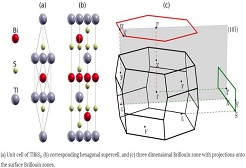
Udo Schwingenschloegl
King Abdullah University of Science & Technology,Saudi Arabia
Title: Designing topological states by pressure, strain and functionalization
Biography
Biography: Udo Schwingenschloegl
Abstract
Various examples of the design of topological states by means of first-principles calculations are discussed. The presentation focusses on the design parameters: Pressure, strain and functionalization. TiTe2 is found to be unusually accessible to strain effects and the first compound that under hydrostatic pressure (up to experimentally reasonable 30 GPa) is subject to a series of four topological phase transitions, which are related to band inversions at different points of the Brillouin zone. Therefore, TiTe2 enables experimental access to all these transitions in a single compound. Phase transitions in TlBiS2 and TlSbS2 are identified by parity analysis and by calculating the surface states. Zero, one and four Dirac cones are found for the 111 surfaces of both TlBiS2 and TlSbS2 when the pressure grows, which confirms trivial-nontrivial-trivial phase transitions. The Dirac cones at the M points are anisotropic with large out-of-plane component. TlBiS2 shows normal, topological and topological crystalline insulator phases under hydrostatic pressure, thus being the first compound to exhibit a phase transition from a topological to a topological crystalline insulator. Monolayer arsenic and arsenic antimonide are semiconductors (direct band gap at the Γ point), fluorination results for both compounds in Dirac cones at the K points. Fluorinated monolayer arsenic shows a band gap of 0.16 eV due to spin-orbit coupling and fluorinated arsenic antimonide a larger band gap of 0.37 eV due to inversion symmetry breaking. Spin-orbit coupling induces spin splitting similar to monolayer MoS2. Phonon calculations confirm that both materials are dynamically stable. Calculations of the edge states of nanoribbons by the tight-binding method demonstrate that fluorinated arsenic is topologically nontrivial in contrast to fluorinated arsenic antimonide.

Recent Publications
- S. Sharma and U. Schwingenschlogl, Thermoelectric response in single quintuple layer Bi2Te3, ACS Energy Letters 1, 875-879 (2016).
- J.J. Zhu and U. Schwingenschlogl, Silicene for Na-ion battery applications, 2D Materials 3, 035012 (2016).
- N. Singh and U. Schwingenschlogl, Extended moment formation in monolayer WS2 doped with 3d transition-metals, ACS Applied Materials & Interfaces 8, 23886-23890 (2016).
- Q.Y. Zhang and U. Schwingenschlogl, Emergence of Dirac and quantum spin Hall states in fluorinated monolayer As and AsSb, Physical Review B 93, 045312 (2016).
- Q.Y. Zhang, Y.C. Cheng, and U. Schwingenschlogl, Emergence of topological and topological crystalline phases in TlBiS2 and TlSbS2, Scientific Reports 5, 8379 (2015).

